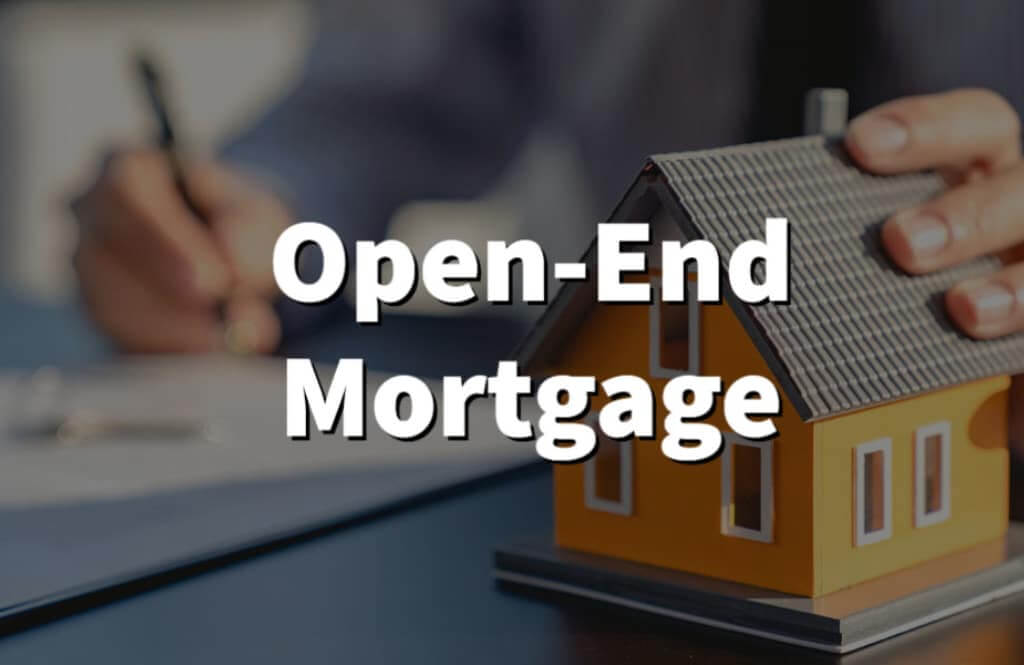
What is an Open-End Mortgage – Get All The Information
Have you ever wondered what an open-end mortgage is and how it differs from other types of mortgages? If you’ve been into real estate finance and mortgage refinancing, you’re familiar with the general concept of a mortgage, which refers to the agreement between borrower and lender.
That agreement includes the deal that the lender would take away the borrower’s property in case a borrower fails to return that type of loan plus interest in the adjusted period. Often, mortgage loans are utilized by those willing to invest in their future home or borrow additional funds against the home they already own.
But what does the open-end mortgage represent exactly? Let’s get more useful information about this specific type, shall we?
What is the definition of an open-end mortgage?
If you are familiar with real estate finance and mortgage refinancing, you will understand the concept of a mortgage. A mortgage refers to a specific agreement between a borrower and a lender.
An open-end mortgage refers to a specific type of home loan where the entire amount isn’t advancing immediately. However, it is utilized one at a time, as required. This type of mortgage enables an individual borrower to grow the quantity of the remaining mortgage principal balance at a subsequent point in time.
Generally speaking, among the other mortgage types, the open-end mortgage allows the borrower to return to the lender for taking additional money. Usually, we witness a limitation of the dollar amount a borrower can borrow from the lender. In other words, the mortgage borrowing should be restricted to the fixed maximum account in this case.
What does that mortgage enable the borrower?

An open-end mortgage allows the borrower to augment the remaining loan principal at a future point. This type of mortgage enables the borrower to access a portion of the approved loan amount to cover home expenses.
By borrowing only what is required, the borrower is able to fully enjoy a reduced interest rate, as they are solely responsible for interest payments on the remaining balance. An open-end mortgage is, without a doubt, beneficial for borrowers who qualify for a greater loan principal than necessary for the home purchase.
How does an open-end mortgage function?
If you are still trying to figure out mortgage flexibility and its functions, you must understand the whole point behind this mortgage. The main reason the open-end mortgage is so authentic is that they represent a certain loan consensus which is fixed as opposed to real estate land with money leading to the land’s investment exclusively.
This type of mortgage is just like the detained draw term loan. The mortgage features are also very alike those of revolving credit. It lets borrowers secure a maximum loan amount they can use over a set short or long-term period.
They can also withdraw portions of the approved loan to cover their home expenses, reducing their interest payments. It’s crucial to comprehend that borrowers can access the loan principal with an open-end mortgage. Of course, whenever specified in the loan terms. Remember that borrowing may also depend on the home’s appraisal value.
A simple example of an open-end mortgage

Consider a scenario where a borrower secures a $500,000 open-end mortgage to purchase a home. The mortgage has a 20-year term with a fixed interest rate of 3.25%. They can choose how much of the loan amount they want to withdraw.
Initially, they withdraw $250,000 and make interest payments on that balance. After four years, they access an additional $125,000, increasing the outstanding balance to $375,000. They continue making interest payments on this revised balance.
What is an adjustable-rate mortgage?
Unlike the familiar fixed-rate mortgages, adjustable-rate mortgages offer a fixed interest rate for an initial period. That span is usually from 5 to 10 years. Afterward, the interest rate is able to adjust periodically, established on market conditions and selected indexes.
These adjustments normally happen at set intervals, calculated by combining a margin with an index like the U.S. Treasury bill rate or LIBOR. While ARMs may start with lower rates, borrowers should carefully consider potential fluctuations. Seeking guidance from a mortgage advisor is crucial to navigating adjustable-rate mortgages effectively.
Understanding Open-End Mortgages
Open-end mortgages differ from other loans like delayed draw term loans or revolving credit. Unlike those loans, borrowers don’t usually need to meet milestones for additional funds. With open-end mortgages, funds are available for a specific period, unlike revolving credit which is open-ended except in case of default.
In open-end mortgages, you can only use the available credit against the secured collateral, normally your property. Thus, the money you receive is required to go toward the property the lender holds. Keep in mind that defaulting on the loan may affect fund availability.
In simple terms, open-end mortgages offer flexibility for accessing extra funds without strict requirements. However, you must use the funds for the property used as collateral.
What are the top pros and cons of an open-end mortgage?

If you are considering this specific type of mortgage, it’s always beneficial to note its main pros and cons. Let’s first see the pros that make the open-end mortgage so popular and used by numerous individuals worldwide, shall we?
Main pros
The top pros of the open-end mortgage include the following:
- You can go only through one mortgage at a time during the application process.
- Paying off your mortgage faster with flexibility and no penalties are possible. It means Increasing payments or making lump-sum payments without repercussions.
- Refinance your mortgage for greater affordability and flexibility.
- The only interest you pay is for the amount you borrow and for nothing else added.
Main cons:
On the other hand, its main cons are:
- You can only access the amount you have been pre-approved for.
- The draw period limits how long you can borrow the funds.
- Pre Approval doesn’t guarantee affordability, considering your financial situation and budget.
- Interest rates on open mortgages are higher than on closed ones.
Bottom Line

Open-end mortgages, in conclusion, enable worldwide homeowners to access the funds secured against their property. Very often, these homeowners possess higher interest rates compared to fixed-rate loans. That also includes adjustable-rate mortgages (ARMs), where rates can change.
Despite this, open-end mortgages provide flexibility for early repayments without penalties, potentially saving money. They are mostly utilized in residential and commercial real estate transactions and may be tied to indexes like the Secured Overnight Financing Rate (SOFR).
If you are familiar with real estate finance and mortgage refinancing, you will understand the concept of a mortgage. As mentioned earlier, a mortgage represents an agreement between a borrower and a lender. To make informed decisions, consider interest rates, early repayment charges, and the possibility of rate increases. Consult a mortgage professional for guidance.




